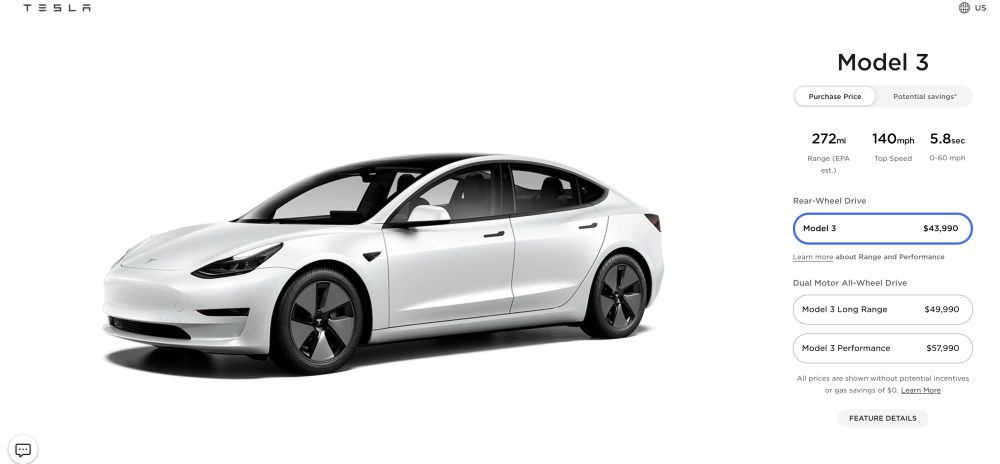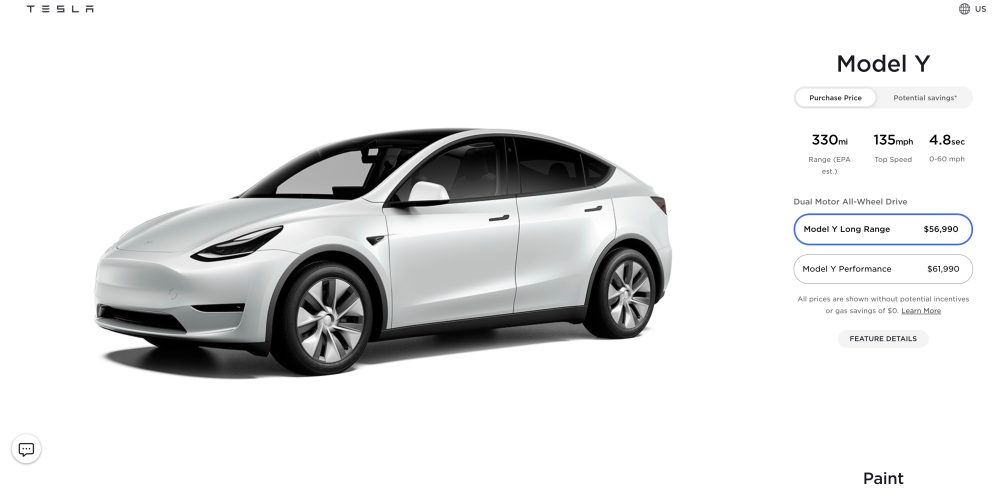
Tesla has updated Model 3 and Model Y ranges with the 2022 model year and most of them got higher ranges – though it depends on the wheels.
In an overnight update to its online configurator, Tesla changes the ranges of several of its most popular Model 3 and Model Y trims.
The update seems to coincide with Tesla shifting production to the 2022 model year.
Model years are not as big of a deal with Tesla as it is with most other automakers since the electric automaker doesn’t wait for a new model year to implement changes in its vehicles.
It continuously introduces new features and changes throughout the year as they are ready for production.
However, some model years coincide with bigger changes.
For the 2022 model year, Tesla appears to have made changes that affected the range of Model 3 and Model Y vehicles.
For the Model 3 Standard Range Plus, the range went from 262 to 272 miles on a single charge:

That’s on the “standard” 18″ wheels, which are only standard in price, as in cheaper, because Tesla now has the 19″ wheels selected by default on the online configurator.
With the 19″ wheels, the range falls to 267 miles.
Also, Tesla doesn’t seem to refer to the base Model 3 as a “Standard Range Plus”.
Now it only refers to it as “Rear-Wheel Drive” and the different battery packs are only differentiated by the Model 3 Dual Motor being called also “Long Range”.
Speaking of the Model 3 Long Range, it goes from 353 to 358 miles with the 18″ wheels.
With 19″ wheels, the range goes down to 334 miles on a single charge.
The Model Y Long Range also got a bump. It went from 326 to 330 miles of range:

That’s on the smaller 19″ wheels as the 20″ reduces efficiency – resulting in 318 miles of range.
It’s not clear what changes have led to the updated range.
However, when it comes to the Model 3 Standard Range, which is not being called “Standard Range” anymore, Tesla recently announced that it is moving all “standard range” vehicles to LFP batteries.
It could explain the change. We will update if we get more information.
Subscribe to Electrek on YouTube for exclusive videos and subscribe to the podcast.
Author: Fred Lambert
Source: Electrek



